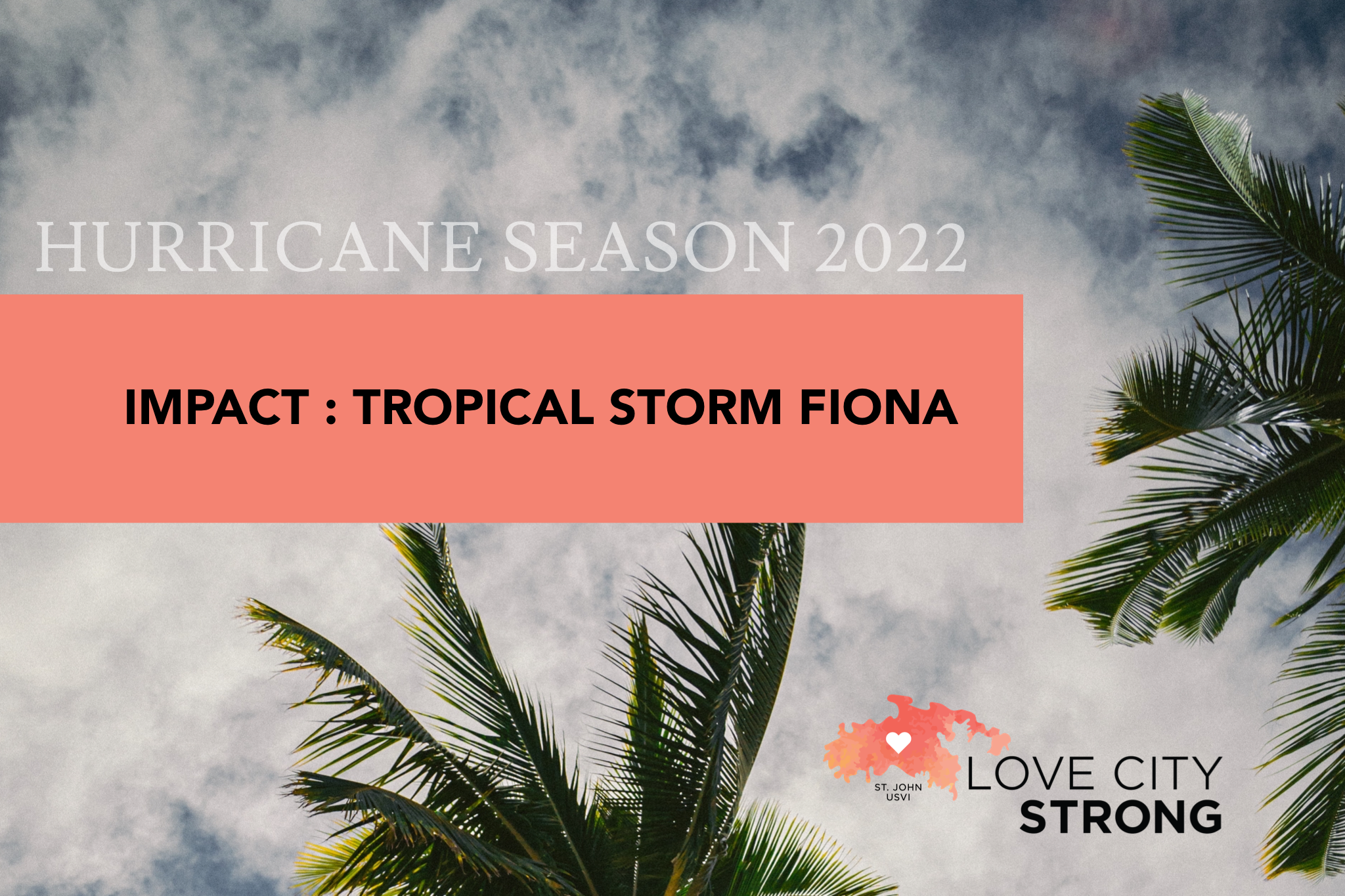
Impact : FIONA

Hurricane Fiona is pulling away from the Territory and leaving destruction in her wake across Puerto Rico, the Dominican Republic, and Turks and Caicos. Here in the USVI, we can reflect on how fortunate we were in this instance.
After all, we face many of the same challenges as our neighbors in Puerto Rico. Our Territory is also still in recovery five years after Hurricanes Irma and Maria. Our infrastructure reconstruction and hardening are far from complete. When the ground is saturated, as it often is by this point in the hurricane season, heavy rains can cause flooding in our watersheds. This in turn can wash out roads and retaining walls. Residents still living under partially or completely tarped roofs are at increased risk during even a passing rainstorm, let alone a tropical storm or hurricane. Our situation is always precarious when it comes to tropical weather, and we do ourselves a disservice to underestimate the impacts.
It can feel easy to dismiss a storm like Fiona as “just” a tropical storm, or “just” rain. However, clearly the impacts of torrential rain can be just as devastating as high winds, if not more so. It is important that we learn how to talk about these hazards in ways that accurately communicate risk. We must use the tools that are available and think critically about incoming weather. That way, we can make informed decisions about our own safety and wellbeing.
As Fiona passed south of the USVI this weekend, the storm slowed significantly. When a system’s forward motion slows from 15 mph to 8 mph, that results in an adjustment to the impact window. Sometimes it can shift by days. When creating emergency plans, whether for household or business, it’s critical to keep up to date on the latest information, and to interpret what that information will mean for you and for the plan you have in place.
Perhaps you think that a storm will “finish” at a certain time, and make plans for how to resume your daily routines. When that time arrives, a glance outside shows clearly that the storm is not over. A comprehensive emergency plan should include fall backs and alternatives for situations like this.
It’s also important to know what informational tools you have at your disposal. There are countless apps that will keep you updated on developments in the tropics, websites that will offer the latest tracking, and TV and YouTube Channels that will provided detailed analysis. Building a good network of information will help ensure that you are prepared and well informed no matter what the impact.
The truth is, preparedness is always a work in progress. When you are dealing with complex systems like tropical weather, layered on top of equally complex systems like Caribbean islands in the midst of recovery, there are always elements of the unknown. However, by doing our best to take in good data, build good habits, and think critically, we can all grow more prepared over time.
Here are some of my trusted resources for forecasts and analysis:
Hurricane Tracker App (available in the App Store and Google Play)
NHC.NOAA.GOV : for regular updates, straight from the source (the National Hurricane Center)
Track the Tropics : for detailed models and analysis
Tropical Tidbits : particularly useful for forecast models
Mr. Weatherman : a relatively new, no-hype forecast channel on YouTube that gives comprehensive coverage to Caribbean islands
Additional apps for hourly weather forecasts:
Dark Sky
Clime: NOAA Weather Radar
Weather Underground
Windy.com
